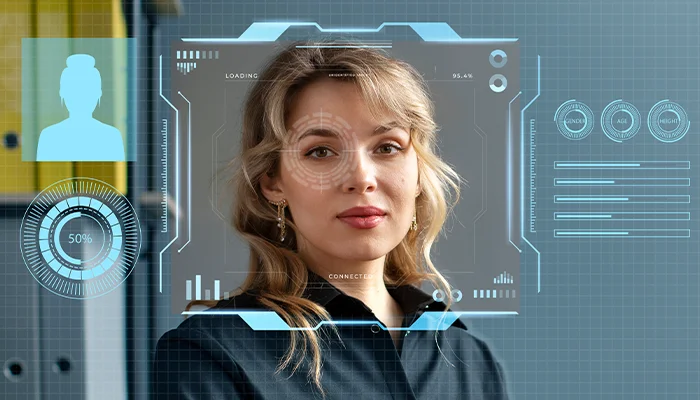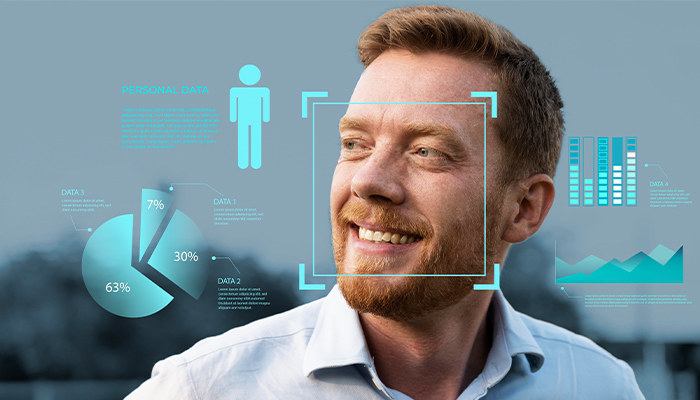10 Top AI Deepfake Detector Tools for 2024 and Beyond

APR, 25, 2024 14:10 PM
10 Top AI Deepfake Detector Tools for 2024 and Beyond
In the age of advanced digital manipulation, deepfake technology has emerged as a potent tool for creating realistic yet fabricated videos and images. While deepfakes can be entertaining in certain contexts, they also pose significant challenges, including misinformation, identity theft, and privacy breaches. To combat these issues, the development of AI-powered deepfake detector tools has become crucial. In this blog post, we'll explore the top 10 AI deepfake detector tools for 2024 and beyond, highlighting their features, benefits, and contributions to ensuring a safer digital environment.
The Evolution of Deepfake Technology
The evolution of deepfake technology has been a fascinating journey marked by significant advancements, challenges, and ethical considerations. It began as a niche technology but has rapidly grown into a complex and controversial phenomenon with profound implications for society, the media, and cybersecurity.
Inception and Early Development: Deepfake technology originated from the field of artificial intelligence, specifically from the advancements in machine learning algorithms, particularly generative adversarial networks (GANs). Early deepfake applications focused on face-swapping techniques in videos and images, allowing users to superimpose the faces of celebrities or public figures onto other individuals. These early experiments demonstrated the potential of AI to create highly realistic and convincing visual content.
Key Advancements: Over time, deepfake technology evolved with key advancements in AI algorithms, data processing capabilities, and computational power. Deep learning models became more sophisticated, enabling the creation of deepfake videos with seamless lip-syncing, facial expressions, and voice modulation. The introduction of neural network architectures such as autoencoders and variational autoencoders further enhanced the realism and quality of deepfake content.
Challenges and Risks:espite its technological progress, deepfake technology has posed significant challenges and risks. One of the primary concerns is the potential misuse of deepfakes for malicious purposes, including spreading misinformation, manipulating public opinion, and impersonating individuals. Deepfakes have been weaponized in political propaganda, fake news campaigns, and online harassment, raising concerns about their impact on trust, authenticity, and digital integrity.
Ethical Considerations: The rise of deepfake technology has also raised profound ethical considerations. The creation and dissemination of deepfake content without consent raises issues of privacy, consent, and digital rights. Deepfakes can be used to create non-consensual explicit content (referred to as "deepfake porn"), leading to violations of individuals' dignity and reputation. Moreover, deepfakes blur the lines between reality and fiction, challenging our perception of truth, authenticity, and visual evidence.
Countermeasures and Mitigation Strategies: In response to the challenges posed by deepfakes, researchers, tech companies, and policymakers have developed countermeasures and mitigation strategies. AI-driven deepfake detection tools, such as the ones discussed in this blog, leverage machine learning algorithms to identify and flag manipulated media. Content moderation policies, digital forensics techniques, and legal frameworks have also been implemented to address deepfake-related threats and violations.
Future Trends: Looking ahead, the evolution of deepfake technology is expected to continue, with potential advancements in audio deepfakes, text-based AI, and multimodal content generation. As deepfake detection tools improve, so do deepfake generation techniques, leading to an ongoing cat-and-mouse game between creators and detectors. Ethical guidelines, public awareness campaigns, and interdisciplinary collaborations will play a crucial role in navigating the ethical and societal implications of deepfake technology in the years to come.
1. Deepware Scanner Key
Features:
Utilizes AI algorithms to detect facial manipulations and anomalies indicative of deepfake content.
- Provides real-time analysis and alerts for identifying potentially deceptive videos and images.
- Offers integration with video platforms, social media networks, and content moderation systems.
- Continuous updates and improvements based on evolving deepfake techniques and patterns.
Benefits:
- Enhances content moderation efforts by automatically flagging suspicious deep-fake content.
- It helps platforms and organizations prevent the spread of misleading or harmful media.
- Enables proactive detection and mitigation of deepfake-related risks in digital content.
2. Sensity
Key Features:
- AI-driven deepfake detection capabilities for identifying manipulated videos and images.
- It focuses on detecting deepfakes related to political misinformation, revenge porn, and malicious activities.
- Provides scalable solutions for social media platforms, news agencies, and online communities.
- Collaborates with researchers and industry experts to stay ahead of deep-fake threats.
Benefits:
- Supports efforts to combat disinformation and protect user privacy on social media platforms.
- Assists news agencies in verifying the authenticity of visual content and preventing fake news.
- Enhances digital security by identifying and removing harmful fake material from online platforms.
3. Truepic
Key Features:
- AI-powered image and video authentication tools for verifying the integrity of media content.
- Detects deepfake alterations, metadata inconsistencies, and digital manipulations.
- Offers secure APIs and SDKs for integrating deepfake detection capabilities into third-party applications.
- Used in various industries, including media, finance, healthcare, and law enforcement.
Benefits:
- It enables businesses and organizations to verify the authenticity of user-generated content.
- Enhances trust and transparency in digital communications, transactions, and evidence.
- Supports legal and regulatory compliance by ensuring the integrity of visual data and media assets.
4. Deeptrace
Key Features:
- Advanced AI algorithms for detecting deepfake videos, audio, and synthetic media.
- Focuses on analyzing facial movements, lip synchronization, and unnatural artifacts in deepfakes.
- Provides forensic analysis tools for investigating deepfake incidents and identifying perpetrators.
- Offers training and educational resources for understanding and combating fake threats.
Benefits:
- Empowers cybersecurity teams and forensic experts to identify and analyze deepfake content.
- Assists law enforcement agencies in conducting digital investigations and evidence analysis.
- Raises awareness and knowledge about fake technology and its implications for society.

5. Amber authenticates
Key Features:
- AI-driven deepfake detection and authentication solutions for video content.
- Verifies the authenticity of video recordings, ensuring they have not been altered or manipulated.
- Integrates with video surveillance systems, body cameras, and digital evidence platforms.
- Provides tamper-proof audit trails and forensic analysis tools for legal purposes.
Benefits:
- Enhances the credibility and reliability of video evidence in legal proceedings and investigations.
- Supports law enforcement, government agencies, and corporate security teams in maintaining data integrity.
- Reduces the risk of tampering, forgery, and manipulation in video recordings and surveillance footage.
6. Cyabra
Key Features:
- AI-powered social media monitoring and deepfake detection platform.
- Identifies fake accounts, manipulates media, and coordinates disinformation campaigns.
- Offers real-time alerts and risk assessments for digital threats and online attacks.
- Used by businesses, brands, and public figures to protect their online reputation and integrity.
Benefits:
- Safeguards against social media manipulation, fake news, and reputation attacks.
- Enables proactive detection and mitigation of digital threats and online harassment.
- Enhances brand trust and credibility by combating malicious content and misinformation.
7. DeepSee
Key Features:
- AI-based deepfake detection and analysis tools for video and image content.
- Identifies facial inconsistencies, unnatural movements, and deepfake artifacts.
- Offers customizable detection models and algorithms for specific use cases and industries.
- Supports media forensics, content moderation, and authenticity verification.
Benefits:
- Enables content platforms and streaming services to prevent the spread of deceptive, deep-fake content.
- Enhances digital media authenticity and trustworthiness for audiences and consumers.
- Provides actionable insights and recommendations for addressing deep-fake-related risks.
8. Deep Video Analyzer
Key Features:
- AI-driven video analysis platform for detecting deepfake videos and manipulated media.
- It focuses on facial recognition, voice modulation, and behavioral anomalies in deepfakes.
- Offers forensic tools and reporting features for investigating deep-fake incidents.
- Used by media organizations, security agencies, and research institutions.
Benefits:
- Enhances media integrity and credibility by identifying and flagging deep-fake content.
- Supports legal investigations, evidence analysis, and digital forensics in deepfake cases.
- Provides insights into deepfake techniques, trends, and emerging threats.
9. HooYoo
Key Features:
- AI-powered deepfake detection and verification solutions for online media.
- Analyzes video and image content for signs of manipulation, AI-generated elements, and synthetic media.
- Offers real-time scanning, API integration, and custom detection models for diverse applications.
- Used by social media platforms, content creators, and digital marketers.
Benefits:
- Protects against deep-fake-based scams, fraud, and misleading content on digital platforms.
- Enhances content authenticity and trust for brands, influencers, and online communities.
- Empowers users to verify the integrity of visual content and identify potential deepfake threats.
10. Deep AI
Key Features:
- AI-driven image and video analysis platform for deepfake detection and content verification.
- Identifies facial manipulations, AI-generated elements, and digital alterations in media.
- Offers customizable detection models, API access, and workflow integration options.
- Used by media companies, cybersecurity firms, and content moderation teams.
Benefits:
- Provides accurate and reliable deepfake detection capabilities for diverse media formats.
- Supports content moderation, brand protection, and user safety on digital platforms.
- Enhances trust and transparency in visual content by verifying authenticity and integrity.
Conclusion
The rise of deepfake technology has highlighted the importance of AI-powered deepfake detector tools in safeguarding digital integrity, combating misinformation, and protecting user privacy. The top 10 AI deepfake detector tools for 2024 and beyond offer advanced capabilities, real-time analysis, and customizable solutions for diverse industries and use cases. Leveraging these tools can contribute significantly to creating a safer and more trustworthy digital environment for all users.
Deepfakes are AI-generated media, typically videos or images, that manipulate or replace the appearance and/or voice of a person in a realistic manner. They are created using deep learning algorithms, such as generative adversarial networks (GANs), which analyze and synthesize large datasets of images and videos to produce convincing fake content.
FAQS
What are the potential risks and dangers associated with deep fakes?
Deepfakes pose various risks, including misinformation, defamation, privacy invasion, and identity theft. They can be used to create fake news, manipulate public opinion, impersonate individuals, and damage reputations. Deepfakes also raise concerns about the erosion of trust in media and the authenticity of visual content.
How can individuals and organizations protect themselves from fake threats?
To mitigate deepfake risks, individuals and organizations can take several precautions:
- Verify the authenticity of media before sharing or using it.
- Stay informed about deep-fake detection tools and techniques.
- Implement b cybersecurity measures, such as secure authentication and data encryption.
- Educate employees, users, and stakeholders about deepfake awareness and prevention strategies.
What are the ethical considerations surrounding deepfakes?
Deepfakes raise ethical concerns related to consent, privacy, and digital manipulation. Creating and sharing deep-fake content without consent can infringe on individuals' rights and dignity. There are also broader ethical implications regarding the potential misuse of deepfakes for malicious purposes, such as political manipulation, fraud, and harassment. It's crucial to consider the ethical implications of deepfakes and promote responsible use and regulation of the technology.
Strategy
Design
Blockchain Solution
Development
Launching
Testing
Maintenance
Contact US!
India

Plot 378-379, Udyog Vihar Phase 4 Rd, near nokia building, Electronic City, Phase IV, Sector 19, Gurugram, Haryana 122015
Copyright © 2025 PerfectionGeeks Technologies | All Rights Reserved | Policy
Strategy
Design
Blockchain Solution
Development
Contact US!
India 
Plot 378-379, Udyog Vihar Phase 4 Rd, near nokia building, Electronic City, Phase IV, Sector 19, Gurugram, Haryana 122015
USA 
1968 S. Coast Hwy, Laguna Beach, CA 92651, United States
Copyright © 2025 PerfectionGeeks Technologies | All Rights Reserved | Policy




